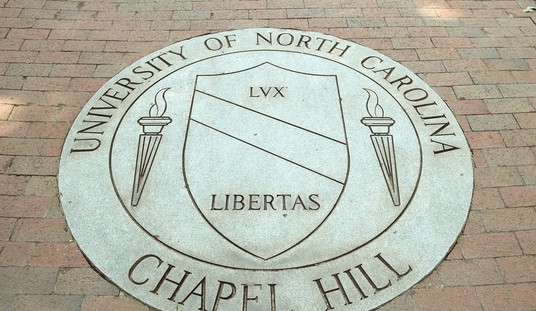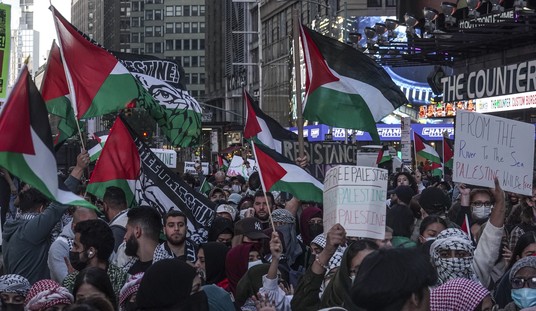The Gray Lady has a narrative, and she’s not going to deviate from it, no matter how incorrect it’s been proven to be. Check out the questions that music writer Jon Caramonica of the New York Times asks rapper Kanye West about his infamous racialist politicization of an NBC fundraiser for victims of Hurricane Katrina in 2005, as spotted by Brent Bozell of the Media Research Center in his latest column:
Egotistical musicians often exaggerate their political influence, none moreso than the nattering, narcissistic rapper Kanye West. He has compared himself in global stature to Apple founder Steve Jobs, and has titled his latest album “Yeesus.”
Rolling Stone magazine has posted part of a West song titled “I Am a God,” where West raps that Jesus is the “Most High,” but he’s a “close high.”
Now it’s the New York Times pandering to West’s colossal self-regard – and it’s downright embarrassing. Mouth-breathing Times writer/superfan Jon Caramonica stooped to telling West that “what I find probably the most moving thing that you’ve ever done, which is calling out President Bush at the Hurricane Katrina telethon. To me, that moment is actually the peak of putting a message in a pop format.” West agreed, designating it as “a very pop moment of a lifetime or generation.”
Do you remember this? Does anyone? Let me remind you of that generation-shaping moment. In the middle of an NBC telethon, as celebrities somberly asked for donations to the Red Cross, West lashed, for no reason, and stupidly, arrogantly, and rudely declared that President Bush “doesn’t care about black people.” [Video here — Ed] He proceeded to add black people were smeared as looters and “now they’ve given them [police?] permission to go down and shoot us.”
Lyndon LaRouche is more rational than this idiot.
Caramonica thought this burp of hate was brilliant. “Were you conscious that that’s what you were doing, or was it totally just instinct?” West replied “it was pretty bugged out. When you think about it, I was wearing like, a Juicy Couture men’s polo shirt. We weren’t there, like, ready for war.”
In addition to President Bush’s efforts to fight AIDS and malaria in Africa, as even Donna Brazile, a chairwoman for the DNC and manager for the Gore-Lieberman presidential campaign in 2000 wrote for CNN this past April, “Bush came through on Katrina:”
Bush understood the need for civility. I joined him despite my frustration because the need was too great for finger-pointing and blame-making. He flew to New Orleans and addressed the nation: “Tonight I also offer this pledge to the American people: Throughout the area hit by the hurricane, we will do what it takes. We will stay as long as it takes to help citizens rebuild their communities and their lives.”
George W. Bush was good as his word. He visited the Gulf states 17 times; went 13 times to New Orleans. Laura Bush made 24 trips. Bush saw that $126 billion in aid was sent to the Gulf’s residents, as some members of his own party in Congress balked.
Bush put a special emphasis on rebuilding schools and universities. He didn’t forget African-Americans: Bush provided $400 million to the historically black colleges, now integrated, that remain a pride, and magnet for African-American students. Laura Bush, a librarian, saw to it that thousands of books ruined by the floods were replaced. To this day, there are many local libraries with tributes devoted to her efforts.
It was a team effort. I’m glad to report the commission I served on went out-of-business in 2010. I’m also grateful and proud to report that President Bush was one of the leaders, and a very important member, of that team. Our recovery can be credited to the civility and tireless efforts of President Bush and other Americans, who united and worked together to help rebuild the Gulf and the place of my birth, New Orleans.
Kudos to Brazile for writing that, particularly in CNN. Glenn Reynolds responded at Instapundit, “Boy, talk about a narrative-buster.”
I don’t know — it didn’t have enough force to penetrate the bunker that houses the New York Times’ editorial bullpen, but with walls — and minds — that thick, what can?









Join the conversation as a VIP Member